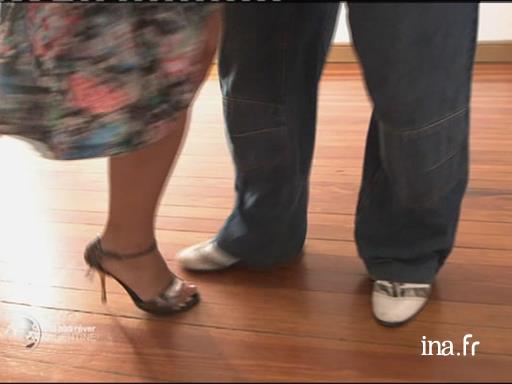Tango forever

Information
TV report. Buenos Aires, an encounter with young people who practise Tango. Portrait of Pablo Inza, a dancer who organizes many dance evenings and who teaches Tango. Every evening, the milongas open their doors to dancers. Interview with Christy, an American student who came to Argentina to be at the birthplace of this dance.
Commentary based on factual images interspersed with interviews with Pablo Inza and Mariana, dancers and teachers of tango.
Context
In the 1970s, Argentine Tango went through a difficult time as a music form and especially dance: young people had become tired of this culture, preferring the vitality of Rock 'n' Roll or the solitary enjoyment of Disco. In short, Tango had become synonymous with mediocrity, even in Buenos Aires, where the few remaining dancers who were still striving to defend the nobility of this art, like Copes, Dinzel, Virulazzo or Arquimbau, only showed their heads on rare occasions.
Things then began to move in the 1980s with the emergence of a global craze initially triggered by the international tours of the show Tango Argentino. In the 1990s, an increasing number of aficionados began frequenting the milongas and dance courses worldwide, opening up an ever-larger market for Argentine professionals of this dance with its 2x4 rythym.
First of all - to simplify matters (greatly) let's say up until the end of the last century - Tango for the main part was taught by the older generation of milongueros who came from the ball-room dancing tradition, such as Cacho Dante, el Tigre, Pepito Avellaneda, and Tete (in addition to the dancers mentioned in the last paragraph). But, over time, these dancers gradually disappeared during the early 2000s.
The torch was fortunately passed on to a new generation of young Argentine dancers. A great many number of them, often with very intense training in classical or folk dance, were interested in the expressive possibilities of Tango. At the same time the high-level contributions these dancers made in terms of technique and choreographic inventiveness served to enhance the dance's traditional foundations. And it is they who are today working to ensure the proliferation of tango around the world.
The documentary Forever Tango introduces us to one of them, Pablo Aubia. By accompanying him during his classes and the milongas that he organizes, we follow the footsteps of the «tango Nuevo", full of youth and creativity, which once again prevails during the nights of Buenos Aires, in dance halls (here they are called "milongas) like Cochabamba 444 and the Viruta. Through the well-conducted interviews and the successful dance scenes, we gain insight into the driving forces behind this re-appropriation of Tango by the new generation, and especially the feeling of pleasure and euphoria that comes from the conexion with your dance partner.
Thanks to the profile of the young dancer American Christy, we also discover another phenomenon: one of «artistic tourism» which leads young and not so young aficionadaos, to come and live in Buenos Aires to learn the secrets and the codes of this 2 X 4 dance from the masters, e.g. Pablo





